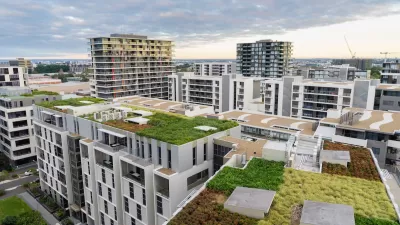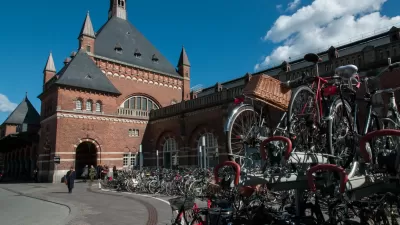Density and diversity—where boundaries between spaces and uses are lessened—create more vibrant, livable places and more functional cities.

In the new book Soft City, David Sim, creative director at Gehl, looks at how cities can foster relationships between physical spaces and the people in them. One way to achieve this, says Sim, is developing "layered" buildings where a variety of uses happen in close proximity, the boundaries are minimal, and the spaces encourage vibrancy and interactions.
"Good cities, from Sim’s perspective, are ones that make these connections possible. They can look different and exist in different contexts, but they share an overarching and essential quality, which Sim calls 'softness'—a stark contrast to the rhetoric of 'grind' and 'harshness' that’s often applied to urban life," writes Eillie Anzilotti.
Sim points out that design strategies for softness are varied and, in general, are not costly or dependent on technology. Wider sidewalks, courtyards, and street-level retail are all ways to activate and connect streets and buildings, notes Anzilotti. "And creating multiple entrances into a building, Sim says, perforates the boundary between the streetscape and what happens inside buildings so the lived experience of a person becomes one in which the whole city feels more accessible and connected, and much softer."
FULL STORY: Do you live in a ‘soft city’? Here’s why you probably want to

Alabama: Trump Terminates Settlements for Black Communities Harmed By Raw Sewage
Trump deemed the landmark civil rights agreement “illegal DEI and environmental justice policy.”

Planetizen Federal Action Tracker
A weekly monitor of how Trump’s orders and actions are impacting planners and planning in America.

The 120 Year Old Tiny Home Villages That Sheltered San Francisco’s Earthquake Refugees
More than a century ago, San Francisco mobilized to house thousands of residents displaced by the 1906 earthquake. Could their strategy offer a model for the present?

In Both Crashes and Crime, Public Transportation is Far Safer than Driving
Contrary to popular assumptions, public transportation has far lower crash and crime rates than automobile travel. For safer communities, improve and encourage transit travel.

Report: Zoning Reforms Should Complement Nashville’s Ambitious Transit Plan
Without reform, restrictive zoning codes will limit the impact of the city’s planned transit expansion and could exclude some of the residents who depend on transit the most.

Judge Orders Release of Frozen IRA, IIJA Funding
The decision is a victory for environmental groups who charged that freezing funds for critical infrastructure and disaster response programs caused “real and irreparable harm” to communities.
Urban Design for Planners 1: Software Tools
This six-course series explores essential urban design concepts using open source software and equips planners with the tools they need to participate fully in the urban design process.
Planning for Universal Design
Learn the tools for implementing Universal Design in planning regulations.
Clanton & Associates, Inc.
Jessamine County Fiscal Court
Institute for Housing and Urban Development Studies (IHS)
City of Grandview
Harvard GSD Executive Education
Toledo-Lucas County Plan Commissions
Salt Lake City
NYU Wagner Graduate School of Public Service




























